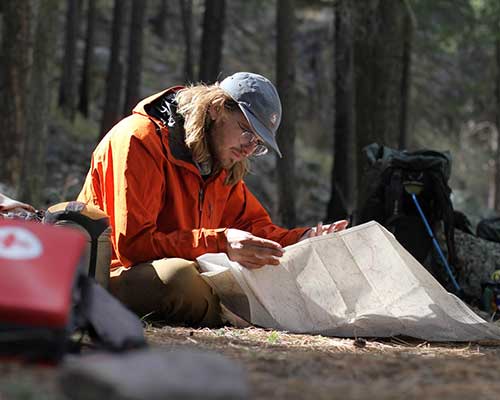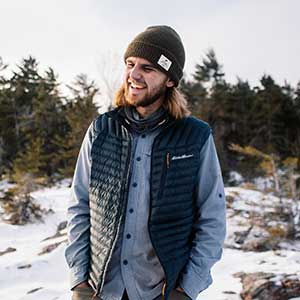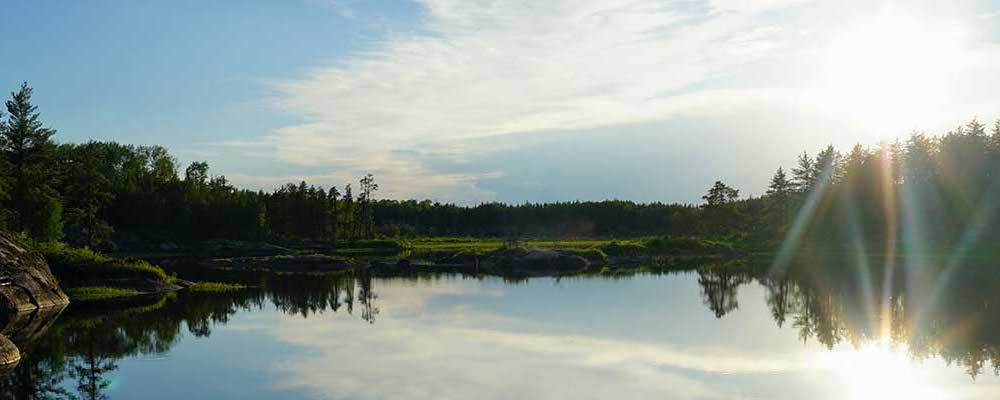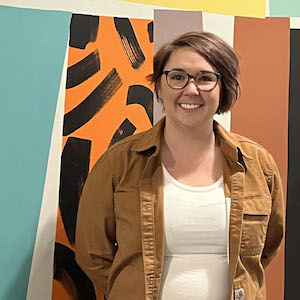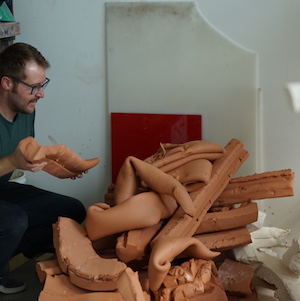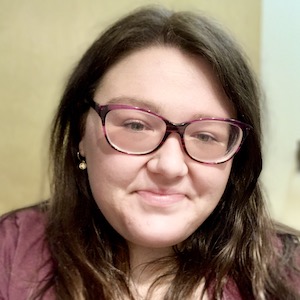Cody Kirk
For MPS in Integrated Behavioral Health (IBH) student, Cody Kirk seemed destined to work in the field of wilderness therapy. His parents met as camp counselors, and before he could walk or talk he was “baby Cody, living at a YMCA overnight camp with a big old husky in the woods.”
As an undergraduate student in philosophy, he studied Buddhism in Sri Lanka and lived communally on a farm in Oregon, eventually earning a double minor in religion and peace and conflict resolution.
He spent his summers facilitating camping trips for YMCA Camp Menogyn, where he would lead groups into the Boundary Waters, northern Alaska, Canada, and beyond.
“So that led me to wilderness therapy,” he says. He became a full-time field instructor and field specialist in Wisconsin for two years, working with adolescents and their clinical teams.
What does wilderness therapy Involve?
Wilderness therapy takes a group work approach to treatment, recovery, and the healing process. And, like other forms of therapy, counselors can address addiction, recovery, and some mental health disorders like anxiety, depression, and trauma.
Some people may associate the treatment with a “boot camp” style approach, where the “problem” would be worked, hiked, and camped out of the person. But the practice has greatly evolved over the years.
The format has become much more clinically focused, treatment oriented, and structured. Group leaders work closely with the clinical teams, even though the therapist may not be out in the woods every day. The group has to learn how to function as a cooperative unit with each member taking on responsibilities. “Therapy is actually happening all the time,” Kirk says.
Through a growing body of research, support, and success stories, Kirk hopes that it can be recognized as a legitimate treatment method by insurance companies.
“This would greatly increase not only enrollment numbers but also eligible participants,” Kirk says, “because unfortunately, one of the things about wilderness therapy is that it's often only affluent families that can access it. So hopefully it will be more universally accepted as a safe and effective form of treatment.”
What led you to the IBH program?
Kirk’s decision to attend graduate school was primarily career-driven. He was looking for a program where he could incorporate his “passion for the human experience and the nature-based way in which we interact with the world.”
He looked into a variety of different master’s programs in and out of state. He talked about the course offerings with clinicians he knew who assured him that it was the right pathway to becoming a licensed counselor. It was also close to home, “so financially and academically, it just really made sense.”
Kirk is currently balancing two jobs while attending school full-time. Every other weekend he goes to an adult transition group home where he works with two clients, aged 17 and 22.
“I kind of have the role of fun uncle,” he says. The three go sledding or biking, play ping-pong, or go to the park.
His other job is as a live-in peer mentor, providing support for a young man in recovery who also receives other mental health-related treatment and services. He will be off into the wilderness again this summer, as he leads a small group of adolescents into northern Alaska.
Kirk’s background in philosophy and religion, as well as his own experience with therapy, bring a unique mindfulness and empathy to his work, as well as to his future role as a counselor.
Having an A-Ha Moment
In the Group Dynamics course the instructor, Fiyyaz Karim, explained how small therapy groups can become their own micro-families. Kirk saw this play out firsthand in the woods, where the young people often took on the role of siblings and the group leaders became parental figures whose authority could get challenged. When the therapist, who was familiar with each youth’s family dynamics, would come to the campsite they could easily see why certain behaviors were surfacing.
The One Thing We Should All Be Doing Right Now
“Take a walk with somebody that you care about. Get out there, don’t plan an end time or think too much about if the weather's nice or not. Just get out there for the sole purpose of sharing that time and that space with somebody you care about and seeing where that time takes you.”
Advice for Future Students
- If possible, have some level of exposure to clinical work and various forms of mental health treatment to help you contextualize some of the learning.
- Have some sense of your own interests and passions prior to coming in to help you choose a direction in your limited time.
- Take the opportunity to look into various areas of literature and research.
Cody Kirk is a recipient of the Julius Nolte-Harold Miller Scholarship.
Top photo of Gates of the Arctic National Park and Preserve by Cody Kirk

